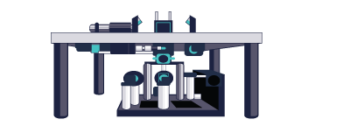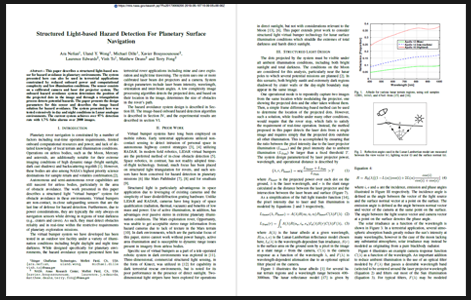Written by NASA, this article explains the usage of Osela’s multi dot laser projector for planetary navigation.
Abstract— This paper describes a structured light-based sensor for hazard avoidance in planetary environments.
The system presented here can also be used in terrestrial applications constrained by reduced onboard power and computational complexity and low illumination conditions. The sensor consists on a calibrated camera and laser dot projector system.
The onboard hazard avoidance system determines the position of the projected dots in the image and through a triangulation process detects potential hazards. The paper presents the design parameters for this sensor and describes the image based solution for hazard avoidance.
The system presented here was tested extensively in day and night conditions in Lunar analogue environments. The current system achieves over 97% detection rate with 1.7% false alarms over 2000 images.
Contact us if you would like to find out more about our Osela lasers:































